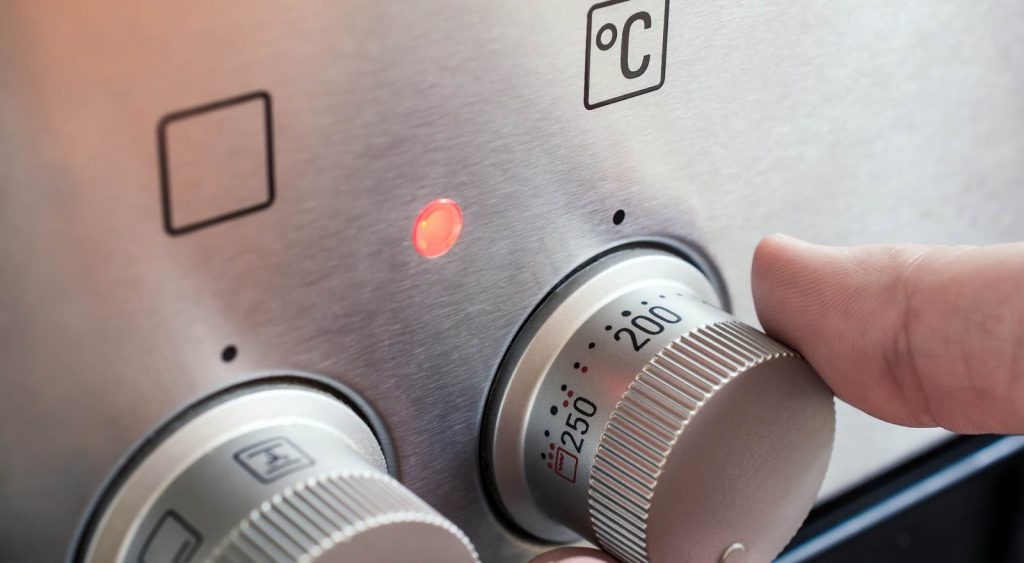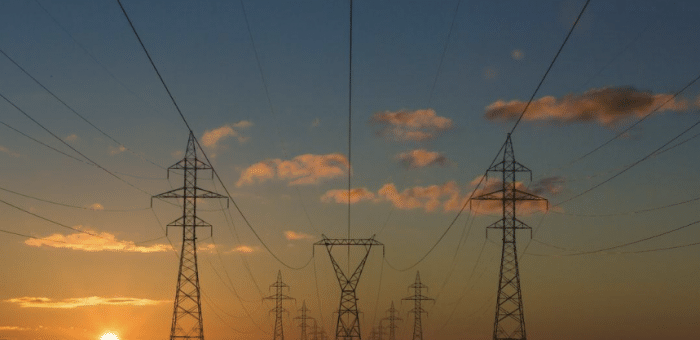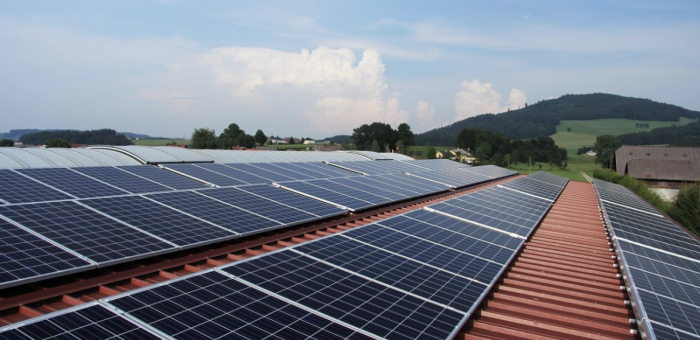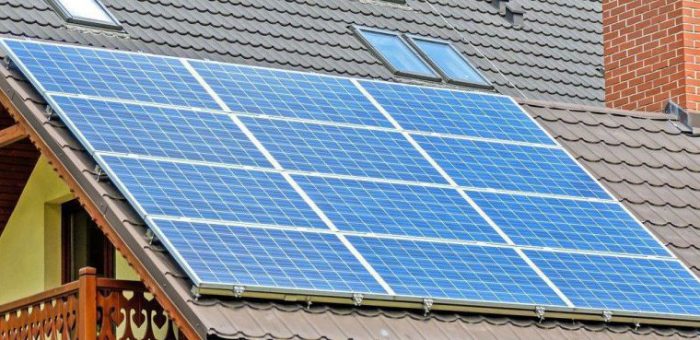Walking your dog through your neighborhood, you’ve started to wonder: How can my neighbors afford to have so many lights on every night?
Your electricity bill keeps rising, even though you are trying your hardest to turn off the lights whenever you can.
It’s not you. Your neighbors probably just have a better electricity rate than you. But how can you know how much you should be paying for electricity in your area?
With Power Wizard’s Shopping Tool!
Our innovative shopping tool was designed to make sure you have the best electricity plan on the block. So what are you waiting for?
Let us find you the best electricity plan in seconds and start saving.
This guide shares a comprehensive overview of US electricity prices.
Click on a section to skip directly to it:
How Are Electricity Prices Determined?

According to the US Energy Information Administration, there are many factors that influence the price of electricity in the United States.
- Fuel prices: Electricity is generated through the burning of fuel. When fuel prices increase, there’s a strong likelihood that electricity prices will also increase.
- The efficacy of the distribution systems: The power plants distribute electricity through distribution systems. If those systems get damaged or need costly repairs, electricity prices might increase.
- Weather conditions: If there’s a lot of rain and snow, then hydropower might become more efficient (therefore lowering electricity prices). If there’s extreme weather (especially heat) then prices can go up because of high demand.
- And more
Wholesale Electricity Prices
What is wholesale electricity?
Texas specifically has deregulated electricity. The wholesalers are those electricity companies (REPs) that then sell electricity to consumers.
What are wholesale electricity prices?
Electricity companies have to purchase electricity just like consumers. They buy electricity at a lower rate than consumers and “package” it in different deals to sell to residents.
Residential Electricity Prices
Residential electricity prices are the prices that the residents of the United States pay.
These prices are higher than the wholesale prices.
Average Cost of kWh In The US:
Electricity kWh rates in the US are constantly changing. Not only that, but electricity in some states is much more expensive than electricity in other states.
For example…
The average household in Alaska pays 23.89¢ per kWh.The average household in Texas pays 11.85¢ per kWh
Alaskans pay 101.4% higher than Texans. They pay over twice as much.
Discover the best electricity rates.
Power Wizard finds you the best electricity plan and ensures you won’t overpay for electricity again.
Learn More in Under 2 MinsHistorical Electricity Prices By State:

Have electricity prices gone up?
Electricity prices over the last 10 years have…
If you’re curious about the average electric bill by state, you can click on the link to check out that data.
Alabama:
Alabama Electricity Prices 10 Years Ago (2010)
In 2010, the average price for electricity in Alabama was 10.67¢ per kWh.
How does this compare to Texas’s historical rates?
Texans paid 8.02% more than Alabamans.
Alabama Electricity Prices Today (2020)
Today, the average residential property in Alabama pays about 12.71¢ per kWh.
This is 19.12% higher than 10 years ago.
These rates are actually from September of 2019, but are projected to be similar in 2020.
How does this compare to Texas’s current rates?
Texans pay 12.65% less than Alabamans.
Alaska:
Alaska Electricity Prices 10 Years Ago (2010)
In 2010, the average price for electricity in Alaska was 16.26¢ per kWh.
How does this compare to Texas’s historical rates?
Texans paid 40.17% more than Alaskans.
Alaska Electricity Prices Today (2020)
Today, the average residential property in Alaska pays about 23.89¢ per kWh.
This is 46.92% higher than 10 years ago.
These rates are actually from September of 2019, but are projected to be similar in 2020.
How does this compare to Texas’s current rates?
Texans pay 2.91% less than Alaskans.
Discover the best electricity rates.
Power Wizard finds you the best electricity plan and ensures you won’t overpay for electricity again.
Learn More in Under 2 MinsArizona:
Arizona Electricity Prices 10 Years Ago (2010)
In 2010, the average price for electricity in Arizona was 10.67¢ per kWh.
How does this compare to Texas’s historical rates?
Texans paid 8.02% more than Arizonans.
Arizona Electricity Prices Today (2020)
Today, the average residential property in Arizona pays about 12.44¢ per kWh.
This is 16.59% higher than 10 years ago.
These rates are actually from September of 2019, but are projected to be similar in 2020.
How does this compare to Texas’s current rates?
Texans pay 6.45% more than Arizonans.
Arkansas:
Arkansas Electricity Prices 10 Years Ago (2010)
In 2010, the average price for electricity in Arkansas was 8.86¢ per kWh.
How does this compare to Texas’s historical rates?
Texans paid 23.62% more than Arkansans.
Arkansas Electricity Prices Today (2020)
Today, the average residential property in Arkansas pays about 10.05¢ per kWh.
This is 13.43% higher than 10 years ago.
These rates are actually from September of 2019, but are projected to be similar in 2020.
How does this compare to Texas’s current rates?
Texans pay 20.54% more than Arkansans. **
California:
California Electricity Prices 10 Years Ago (2010)
In 2010, the average price for electricity in California was 14.75¢ per kWh.
How does this compare to Texas’s historical rates?
Texans paid 27.16% less than Californians.
California Electricity Prices Today (2020)
Today, the average residential property in California pays about 20.72¢ per kWh.
This is 40.47% higher than 10 years ago.
These rates are actually from September of 2019, but are projected to be similar in 2020.
How does this compare to Texas’s current rates?
Texans pay 17.25% more than Californians.
Discover the best electricity rates.
Power Wizard finds you the best electricity plan and ensures you won’t overpay for electricity again.
Learn More in Under 2 MinsColorado:
Colorado Electricity Prices 10 Years Ago (2010)
In 2010, the average price for electricity in Colorado was 11.04¢ per kWh.
How does this compare to Texas’s historical rates?
Texans paid 4.83% more than Coloradans.
Colorado Electricity Prices Today (2020)
Today, the average residential property in Colorado pays about 12.91¢ per kWh.
This is 16.94% higher than 10 years ago.
These rates are actually from September of 2019, but are projected to be similar in 2020.
How does this compare to Texas’s current rates?
Texans pay 34.59% more than Coloradans.
Connecticut:
Connecticut Electricity Prices 10 Years Ago (2010)
In 2010, the average price for electricity in Connecticut was 19.25¢ per kWh.
How does this compare to Texas’s historical rates?
Texans paid 65.95% less than Connecticutians
Connecticut Electricity Prices Today (2020)
Today, the average residential property in Connecticut pays about 21.54¢ per kWh.
This is 11.90% higher than 10 years ago.
These rates are actually from September of 2019, but are projected to be similar in 2020.
How does this compare to Texas’s current rates?
Texans pay 11.81% less than Connecticutians
Delaware:
Delaware Electricity Prices 10 Years Ago (2010)
In 2010, the average price for electricity in Delaware was 13.8¢ per kWh.
How does this compare to Texas’s historical rates?
Texans paid 18.97% less than Delawareans
Delaware Electricity Prices Today (2020)
Today, the average residential property in Delaware pays about 12.83¢ per kWh.
This is 7.03% lower than 10 years ago.
These rates are actually from September of 2019, but are projected to be similar in 2020.
How does this compare to Texas’s current rates?
Texans pay 11.29% more than Delawareans
Discover the best electricity rates.
Power Wizard finds you the best electricity plan and ensures you won’t overpay for electricity again.
Learn More in Under 2 MinsFlorida:
Florida Electricity Prices 10 Years Ago (2010)
In 2010, the average price for electricity in Florida was 11.44¢ per kWh.
How does this compare to Texas’s historical rates?
Texans paid 1.38% more than Floridians.
Florida Electricity Prices Today (2020)
Today, the average residential property in Florida pays about 12.11¢ per kWh.
This is 5.86% higher than 10 years ago.
These rates are actually from September of 2019, but are projected to be similar in 2020.
How does this compare to Texas’s current rates?
Texans pay 7.12% more than Floridians.
Georgia:
Georgia Electricity Prices 10 Years Ago (2010)
In 2010, the average price for electricity in Georgia was 10.07¢ per kWh.
How does this compare to Texas’s historical rates?
Texans pay 13.19% more than Georgians.
Georgia Electricity Prices Today (2020)
Today, the average residential property in Georgia pays about 11.65¢ per kWh.
This is 15.69% higher than 10 years ago.
These rates are actually from September of 2019, but are projected to be similar in 2020.
How does this compare to Texas’s current rates?
Texans pay 3.21% more than Georgians.
Hawaii:
Hawaii Electricity Prices 10 Years Ago (2010)
In 2010, the average price for electricity in Hawaii was 28.1¢ per kWh.
How does this compare to Texas’s historical rates?
Texans paid 142.24% less than Hawaiians.
Hawaii Electricity Prices Today (2020)
Today, the average residential property in Hawaii pays about 31.17¢ per kWh.
This is 10.93% higher than 10 years ago.
These rates are actually from September of 2019, but are projected to be similar in 2020.
How does this compare to Texas’s current rates?
Texans pay 14.92% less than Hawaiians.
Discover the best electricity rates.
Power Wizard finds you the best electricity plan and ensures you won’t overpay for electricity again.
Learn More in Under 2 MinsIdaho:
Idaho Electricity Prices 10 Years Ago (2010)
In 2010, the average price for electricity in Idaho was 10.42¢ per kWh.
How does this compare to Texas’s historical rates?
Texans paid 10.17% more than Idahoans.
Idaho Electricity Prices Today (2020)
Today, the average residential property in Idaho pays about 9.88¢ per kWh.
This is 5.18% lower than 10 years ago.
These rates are actually from September of 2019, but are projected to be similar in 2020.
How does this compare to Texas’s current rates?
Texans pay 31.26% more than Idahoans.
Illinois:
Illinois Electricity Prices 10 Years Ago (2010)
In 2010, the average price for electricity in Illinois was 7.99¢ per kWh.
How does this compare to Texas’s historical rates?
Texans paid 31.12% more than Illinoisians.
Illinois Electricity Prices Today (2020)
Today, the average residential property in Illinois pays about 12.47¢ per kWh.
This is 56.07% higher than 10 years ago.
These rates are actually from September of 2019, but are projected to be similar in 2020.
How does this compare to Texas’s current rates?
Texans pay 33.27% more than Illinoisians.
Indiana:
Indiana Electricity Prices 10 Years Ago (2010)
In 2010, the average price for electricity in Indiana was 11.52¢ per kWh.
How does this compare to Texas’s historical rates?
Texans paid .690% more than Indianans
Indiana Electricity Prices Today (2020)
Today, the average residential property in Indiana pays about 12.22¢ per kWh.
This is 6.08% higher than 10 years ago.
These rates are actually from September of 2019, but are projected to be similar in 2020.
How does this compare to Texas’s current rates?
Texans pay 13.01% more than Indianans
Discover the best electricity rates.
Power Wizard finds you the best electricity plan and ensures you won’t overpay for electricity again.
Learn More in Under 2 MinsIowa:
Iowa Electricity Prices 10 Years Ago (2010)
In 2010, the average price for electricity in Iowa was 9.56¢ per kWh.
How does this compare to Texas’s historical rates?
Texans pay 17.59% more than Iowans.
Iowa Electricity Prices Today (2020)
Today, the average residential property in Iowa pays about 13.86¢ per kWh.
This is 44.98% higher than 10 years ago.
These rates are actually from September of 2019, but are projected to be similar in 2020.
How does this compare to Texas’s current rates?
Texans pay 12.57% more than Iowans.
Kansas:
Kansas Electricity Prices 10 Years Ago (2010)
In 2010, the average price for electricity in Kansas was 10.03¢ per kWh.
How does this compare to Texas’s historical rates?
Texans paid 13.53% more than Kansasans.
Kansas Electricity Prices Today (2020)
Today, the average residential property in Kansas pays about 12.77¢ per kWh.
This is 27.32% higher than 10 years ago.
These rates are actually from September of 2019, but are projected to be similar in 2020.
How does this compare to Texas’s current rates?
Texans pay 16.18% more than Kansasans.
Kentucky:
Kentucky Electricity Prices 10 Years Ago (2010)
In 2010, the average price for electricity in Kentucky was 8.57¢ per kWh.
How does this compare to Texas’s historical rates?
Texans pay 26.12% more than Kentuckians.
Kentucky Electricity Prices Today (2020)
Today, the average residential property in Kentucky pays about 10.58¢ per kWh.
This is 23.34% higher than 10 years ago.
These rates are actually from September of 2019, but are projected to be similar in 2020.
How does this compare to Texas’s current rates?
Texans pay 13.41% more than Kentuckians.
Discover the best electricity rates.
Power Wizard finds you the best electricity plan and ensures you won’t overpay for electricity again.
Learn More in Under 2 MinsLouisiana:
Louisiana Electricity Prices 10 Years Ago (2010)
In 2010, the average price for electricity in Louisiana was 8.98¢ per kWh.
How does this compare to Texas’s historical rates?
Texans pay 23.36% more than Louisianans.
Louisiana Electricity Prices Today (2020)
Today, the average residential property in Louisiana pays about 9.68¢ per kWh.
This is 77.95% higher than 10 years ago.
These rates are actually from September of 2019, but are projected to be similar in 2020.
How does this compare to Texas’s current rates?
Texans pay 12.36% more than Louisianans.
Maine:
Maine Electricity Prices 10 Years Ago (2010)
In 2010, the average price for electricity in Maine was 15.71¢ per kWh.
How does this compare to Texas’s historical rates?
Texans pay 35.43% less than Mainers.
Maine Electricity Prices Today (2020)
Today, the average residential property in Maine pays about 18.11¢ per kWh.
This is 15.28% higher than 10 years ago.
These rates are actually from September of 2019, but are projected to be similar in 2020.
How does this compare to Texas’s current rates?
Texans pay 27.80% more than Mainers.
Maryland:
Maryland Electricity Prices 10 Years Ago (2010)
In 2010, the average price for electricity in Maryland was 14.32¢ per kWh.
How does this compare to Texas’s historical rates?
Texans paid 23.45% less than Marylanders.
Maryland Electricity Prices Today (2020)
Today, the average residential property in Maryland pays about 12.83¢ per kWh.
This is 10.41% higher than 10 years ago.
These rates are actually from September of 2019, but are projected to be similar in 2020.
How does this compare to Texas’s current rates?
Texans pay 6.79% more than Marylanders.
Discover the best electricity rates.
Power Wizard finds you the best electricity plan and ensures you won’t overpay for electricity again.
Learn More in Under 2 MinsMassachusetts:
Massachusetts Electricity Prices 10 Years Ago (2010)
In 2010, the average price for electricity in Massachusetts was 14.59¢ per kWh.
How does this compare to Texas’s historical rates?
Texans paid 25.78% less than Massachusettsans.
Massachusetts Electricity Prices Today (2020)
Today, the average residential property in Massachusetts pays about 22.02¢ per kWh.
This is 50.93% higher than 10 years ago.
These rates are actually from September of 2019, but are projected to be similar in 2020.
How does this compare to Texas’s current rates?
Texans pay 3.70% more than Massachusettsans.
Michigan:
Michigan Electricity Prices 10 Years Ago (2010)
In 2010, the average price for electricity in Michigan was 12.46¢ per kWh.
How does this compare to Texas’s historical rates?
Texans paid 7.41% less than Michiganders.
Michigan Electricity Prices Today (2020)
Today, the average residential property in Michigan pays about 16.37¢ per kWh.
This is 31.38% higher than 10 years ago.
These rates are actually from September of 2019, but are projected to be similar in 2020.
How does this compare to Texas’s current rates?
Texans pay 20.16% more than Michiganders.
Minnesota:
Minnesota Electricity Prices 10 Years Ago (2010)
In 2010, the average price for electricity in Minnesota was 10.59¢ per kWh.
How does this compare to Texas’s historical rates?
Texans paid 8.71% more than Minnesotans.
Minnesota Electricity Prices Today (2020)
Today, the average residential property in Minnesota pays about 14.02¢ per kWh.
This is 32.39% higher than 10 years ago.
These rates are actually from September of 2019, but are projected to be similar in 2020.
How does this compare to Texas’s current rates?
Texans pay 21.80% more than Minnesotans.
Discover the best electricity rates.
Power Wizard finds you the best electricity plan and ensures you won’t overpay for electricity again.
Learn More in Under 2 MinsMississippi:
Mississippi Electricity Prices 10 Years Ago (2010)
In 2010, the average price for electricity in Mississippi was 9.87¢ per kWh.
How does this compare to Texas’s historical rates?
Texans paid 14.91% more than Mississippians.
Mississippi Electricity Prices Today (2020)
Today, the average residential property in Mississippi pays about 10.97¢ per kWh.
This is 11.14% higher than 10 years ago.
These rates are actually from September of 2019, but are projected to be similar in 2020.
How does this compare to Texas’s current rates?
Texans pay 3.65% more than Mississippians.
Missouri:
Missouri Electricity Prices 10 Years Ago (2010)
In 2010, the average price for electricity in Missouri was 9.16¢ per kWh.
How does this compare to Texas’s historical rates?
Texans paid 21.03% more than Missourians.
Missouri Electricity Prices Today (2020)
Today, the average residential property in Missouri pays about 11.15¢ per kWh.
This is 21.72% higher than 10 years ago.
These rates are actually from September of 2019, but are projected to be similar in 2020.
How does this compare to Texas’s current rates?
Texans pay 15.26% more than Missourians.
Montana:
Montana Electricity Prices 10 Years Ago (2010)
In 2010, the average price for electricity in Montana was 9.08¢ per kWh.
How does this compare to Texas’s historical rates?
Texans paid 21.72% more than Montanans.
Montana Electricity Prices Today (2020)
Today, the average residential property in Montana pays about 12.07¢ per kWh.
This is 32.93% higher than 10 years ago.
These rates are actually from September of 2019, but are projected to be similar in 2020.
How does this compare to Texas’s current rates?
Texans pay 28.36% more than Montanans.
Discover the best electricity rates.
Power Wizard finds you the best electricity plan and ensures you won’t overpay for electricity again.
Learn More in Under 2 MinsNebraska:
Nebraska Electricity Prices 10 Years Ago (2010)
In 2010, the average price for electricity in Nebraska was 8.94¢ per kWh.
How does this compare to Texas’s historical rates?
Texans paid 22.93% more than Nebraskans.
Nebraska Electricity Prices Today (2020)
Today, the average residential property in Nebraska pays about 12.33¢ per kWh.
This is 37.92% higher than 10 years ago.
These rates are actually from September of 2019 but are projected to be similar in 2020.
How does this compare to Texas’s current rates?
Texans pay 12.41% more than Nebraskans.
Nevada:
Nevada Electricity Prices 10 Years Ago (2010)
In 2010, the average price for electricity in Nevada was unavailable.
Nevada Electricity Prices Today (2020)
Today, the average residential property in Nevada pays about 12.16¢ per kWh.
These rates are actually from September of 2019 but are projected to be similar in 2020.
How does this compare to Texas’s current rates?
Texans pay 17.88% more than Nevadans.
New Hampshire:
New Hampshire Electricity Prices 10 Years Ago (2010)
In 2010, the average price for electricity in New Hampshire was 16.32¢ per kWh.
How does this compare to Texas’s historical rates?
Texans paid 40.69% less than New Hampshireans..
New Hampshire Electricity Prices Today (2020)
Today, the average residential property in New Hampshire pays about 20.28¢ per kWh.
This is 24.26% higher than 10 years ago.
These rates are actually from September of 2019, but are projected to be similar in 2020.
How does this compare to Texas’s current rates?
Texans pay 10.57% more than New Hampshireans.
Discover the best electricity rates.
Power Wizard finds you the best electricity plan and ensures you won’t overpay for electricity again.
Learn More in Under 2 MinsNew Jersey:
New Jersey Electricity Prices 10 Years Ago (2010)
In 2010, the average price for electricity in New Jersey was 16.57¢ per kWh.
How does this compare to Texas’s historical rates?
Texans paid 42.84% more than New Jerseyans.
New Jersey Electricity Prices Today (2020)
Today, the average residential property in New Jersey pays about 15.48¢ per kWh.
This is 6.58% higher than 10 years ago.
These rates are actually from September of 2019, but are projected to be similar in 2020.
How does this compare to Texas’s current rates?
Texans pay 21.90% more than New Jerseyans.
New Mexico:
New Mexico Electricity Prices 10 Years Ago (2010)
In 2010, the average price for electricity in New Mexico was 10.52¢ per kWh.
How does this compare to Texas’s historical rates?
Texans paid 9.31% more than New Mexicoans.
New Mexico Electricity Prices Today (2020)
Today, the average residential property in New Mexico pays about 12.95¢ per kWh.
This is 23.10% higher than 10 years ago.
These rates are actually from September of 2019 but are projected to be similar in 2020.
How does this compare to Texas’s current rates?
Texans pay 40.34% more than New Mexicoans.
New York:
New York Electricity Prices 10 Years Ago (2010)
In 2010, the average price for electricity in New York was 18.74¢ per kWh.
How does this compare to Texas’s historical rates?
Texans paid 70.36% less than New Yorkers.
New York Electricity Prices Today (2020)
Today, the average residential property in New York pays about 18.72¢ per kWh.
This is 0% higher than 10 years ago.
These rates are actually from September of 2019 but are projected to be similar in 2020.
How does this compare to Texas’s current rates?
Texans pay 18.68% more than New Yorkers.
Discover the best electricity rates.
Power Wizard finds you the best electricity plan and ensures you won’t overpay for electricity again.
Learn More in Under 2 MinsNorth Carolina:
North Carolina Electricity Prices 10 Years Ago (2010)
In 2010, the average price for electricity in North Carolina was 10.12¢ per kWh.
How does this compare to Texas’s historical rates?
Texans paid 12.76% more than North Carolinians.
North Carolina Electricity Prices Today (2020)
Today, the average residential property in North Carolina pays about 11.8¢ per kWh.
This is 16.60% higher than 10 years ago.
These rates are actually from September of 2019 but are projected to be similar in 2020.
How does this compare to Texas’s current rates?
Texans pay 5.15% more than North Carolinians.
North Dakota:
North Dakota Electricity Prices 10 Years Ago (2010)
In 2010, the average price for electricity in North Dakota was 8.13¢ per kWh.
How does this compare to Texas’s historical rates?
Texans pay 29.91% more than North Dakotans.
North Dakota Electricity Prices Today (2020)
Today, the average residential property in North Dakota pays about 12.46¢ per kWh.
This is 53.26% higher than 10 years ago.
These rates are actually from September of 2019 but are projected to be similar in 2020.
How does this compare to Texas’s current rates?
Texans pay 4.84% more than North Dakotans.
Ohio:
Ohio Electricity Prices 10 Years Ago (2010)
In 2010, the average price for electricity in Ohio was 11.32¢ per kWh.
How does this compare to Texas’s historical rates?
Texans paid 2.42% more than Ohioans.
Ohio Electricity Prices Today (2020)
Today, the average residential property in Ohio pays about 11.84¢ per kWh.
This is 4.5% higher than 10 years ago.
These rates are actually from September of 2019, but are projected to be similar in 2020.
How does this compare to Texas’s current rates?
Texans pay 22.98% more than Ohioans.
Discover the best electricity rates.
Power Wizard finds you the best electricity plan and ensures you won’t overpay for electricity again.
Learn More in Under 2 MinsOklahoma:
Oklahoma Electricity Prices 10 Years Ago (2010)
In 2010, the average price for electricity in Oklahoma was 9.14¢ per kWh.
How does this compare to Texas’s historical rates?
Texans pay 15.09% more than Oklahomans.
Oklahoma Electricity Prices Today (2020)
Today, the average residential property in Oklahoma pays about 10.64¢ per kWh.
This is 21.21% higher than 10 years ago.
These rates are actually from September of 2019 but are projected to be similar in 2020.
How does this compare to Texas’s current rates?
Texans pay 15.09% more than Oklahomans.
Oregon:
Oregon Electricity Prices 10 Years Ago (2010)
In 2010, the average price for electricity in Oregon was 8.87¢ per kWh.
How does this compare to Texas’s historical rates?
Texans pay 23.53% more than Oregonians.
Oregon Electricity Prices Today (2020)
Today, the average residential property in Oregon pays about 11.27¢ per kWh.
This is 27.06% higher than 10 years ago.
These rates are actually from September of 2019 but are projected to be similar in 2020.
How does this compare to Texas’s current rates?
Texans pay 25.37% more than Oregonians.
Pennsylvania:
Pennsylvania Electricity Prices 10 Years Ago (2010)
In 2010, the average price for electricity in Pennsylvania was 12.7¢ per kWh.
How does this compare to Texas’s historical rates?
Texans pay 9.48% less than Pennsylvanians. .
Pennsylvania Electricity Prices Today (2020)
Today, the average residential property in Pennsylvania pays about 14.02¢ per kWh.
This is 10.39% higher than 10 years ago.
These rates are actually from September of 2019, but are projected to be similar in 2020.
How does this compare to Texas’s current rates?
Texans pay 13.92% more than Pennsylvanians.
Discover the best electricity rates.
Power Wizard finds you the best electricity plan and ensures you won’t overpay for electricity again.
Learn More in Under 2 MinsRhode Island:
Rhode Island Electricity Prices 10 Years Ago (2010)
In 2010, the average price for electricity in Rhode Island was 15.92¢ per kWh.
How does this compare to Texas’s historical rates?
Texans pay 37.24% less than Rhode Islanders.
Rhode Island Electricity Prices Today (2020)
Today, the average residential property in Rhode Island pays about 22.65¢ per kWh.
This is 42.27% higher than 10 years ago.
These rates are actually from September of 2019 but are projected to be similar in 2020.
How does this compare to Texas’s current rates?
Texans pay 3.10% more than Rhode Islanders.
South Carolina:
South Carolina Electricity Prices 10 Years Ago (2010)
In 2010, the average price for electricity in South Carolina was 10.5¢ per kWh.
How does this compare to Texas’s historical rates?
Texans pay 9.48% more than South Carolinians.
South Carolina Electricity Prices Today (2020)
Today, the average residential property in South Carolina pays about 12.87¢ per kWh.
This is 22.57% higher than 10 years ago.
These rates are actually from September of 2019, but are projected to be similar in 2020.
How does this compare to Texas’s current rates?
Texans pay 8.52% less than South Carolinians.
South Dakota:
South Dakota Electricity Prices 10 Years Ago (2010)
In 2010, the average price for electricity in South Dakota was 8.97¢ per kWh.
How does this compare to Texas’s historical rates?
Texans pay 22.67% more than South Dakotans.
South Dakota Electricity Prices Today (2020)
Today, the average residential property in South Dakota pays about 12.90¢ per kWh.
This is 43.81% higher than 10 years ago.
These rates are actually from September of 2019, but are projected to be similar in 2020.
How does this compare to Texas’s current rates?
Texans pay 7.61% more than South Dakotans.
Discover the best electricity rates.
Power Wizard finds you the best electricity plan and ensures you won’t overpay for electricity again.
Learn More in Under 2 MinsTennessee:
Tennessee Electricity Prices 10 Years Ago (2010)
In 2010, the average price for electricity in Tennessee was 9.23¢ per kWh.
How does this compare to Texas’s historical rates?
Texans pay 20.43% more than Tennesseans.
Tennessee Electricity Prices Today (2020)
Today, the average residential property in Tennessee pays about 10.52¢ per kWh.
This is 13.98% higher than 10 years ago.
These rates are actually from September of 2019, but are projected to be similar in 2020.
How does this compare to Texas’s current rates?
Texans pay 4.92% more than Tennesseans.
Texas:
Texas Electricity Prices 10 Years Ago (2010)
In 2010, the average price for electricity in Texas was 11.60¢ per kWh.
Texas Electricity Prices Today (2020)
Today, the average residential property in Texas pays about 11.85¢ per kWh.
This is 2.15% higher than 10 years ago.
These rates are actually from September of 2019, but are projected to be similar in 2020.
Utah:
Utah Electricity Prices 10 Years Ago (2010)
In 2010, the average price for electricity in Utah was 8.71¢ per kWh.
How does this compare to Texas’s historical rates?
Texans pay 24.91% more than Utahns.
Utah Electricity Prices Today (2020)
Today, the average residential property in Utah pays about 10.93¢ per kWh.
This is 25.49% higher than 10 years ago.
These rates are actually from September of 2019 but are projected to be similar in 2020.
How does this compare to Texas’s current rates?
Texans pay 40.15% more than Utahns.
Discover the best electricity rates.
Power Wizard finds you the best electricity plan and ensures you won’t overpay for electricity again.
Learn More in Under 2 MinsVermont:
Vermont Electricity Prices 10 Years Ago (2010)
In 2010, the average price for electricity in Vermont was 15.57¢ per kWh.
How does this compare to Texas’s historical rates?
Texans pay 34.22% more than Vermonters.
Vermont Electricity Prices Today (2020)
Today, the average residential property in Vermont pays about 17.05¢ per kWh.
This is 9.51% higher than 10 years ago.
These rates are actually from September of 2019, but are projected to be similar in 2020.
How does this compare to Texas’s current rates?
Texans pay 31.66% more than Vermonters.
Virginia:
Virginia Electricity Prices 10 Years Ago (2010)
In 2010, the average price for electricity in Virginia was 10.45¢ per kWh.
How does this compare to Texas’s historical rates?
Texans pay 9.91% more than Virginians.
Virginia Electricity Prices Today (2020)
Today, the average residential property in Virginia pays about 11.9¢ per kWh.
This is 13.88% higher than 10 years ago.
These rates are actually from September of 2019, but are projected to be similar in 2020.
How does this compare to Texas’s current rates?
Texans pay 2.69% more than Virginians.
Washington:
Washington Electricity Prices 10 Years Ago (2010)
In 2010, the average price for electricity in Washington was 8.04¢ per kWh.
How does this compare to Texas’s historical rates?
Texans paid 30.69% more than Washingtonians.
Washington Electricity Prices Today (2020)
Today, the average residential property in Washington pays about 9.86¢ per kWh.
This is 22.64% higher than 10 years ago.
These rates are actually from September of 2019, but are projected to be similar in 2020.
How does this compare to Texas’s current rates?
Texans pay 31.25% more than Washingtonians.
Discover the best electricity rates.
Power Wizard finds you the best electricity plan and ensures you won’t overpay for electricity again.
Learn More in Under 2 MinsWest Virginia:
West Virginia Electricity Prices 10 Years Ago (2010)
In 2010, the average price for electricity in West Virginia was 8.79¢ per kWh.
How does this compare to Texas’s historical rates?
Texans pay 24.22% more than West Virginians#### West Virginia Electricity Prices Today (2020)**
Today, the average residential property in West Virginia pays about 11.67¢ per kWh.
This is 32.76% higher than 10 years ago.
These rates are actually from September of 2019 but are projected to be similar in 2020.
How does this compare to Texas’s current rates?
Texans pay 6.11% more than West Virginians.
Wisconsin:
Wisconsin Electricity Prices 10 Years Ago (2010)
In 2010, the average price for electricity in Wisconsin was 12.65¢ per kWh.
How does this compare to Texas’s historical rates?
Texans paid 9.05% less than Wisconsinites.
Wisconsin Electricity Prices Today (2020)
Today, the average residential property in Wisconsin pays about 15.01¢ per kWh.
This is 18.65% higher than 10 years ago.
These rates are actually from September of 2019, but are projected to be similar in 2020.
How does this compare to Texas’s current rates?
Texans pay 25.15% more than Wisconsinites.**
Wyoming:
Wyoming Electricity Prices 10 Years Ago (2010)
In 2010, the average price for electricity in Wyoming was 8.77¢ per kWh.
How does this compare to Texas’s historical rates?
Texans pay 24.40% more than Wyomingites.
Wyoming Electricity Prices Today (2020)
Today, the average residential property in Wyoming pays about 12.09¢ per kWh.
This is 37.86% higher than 10 years ago.
These rates are actually from September of 2019, but are projected to be similar in 2020.
How does this compare to Texas’s current rates?
Texans pay 24.97% more than Wyomingites.
Discover the best electricity rates.
Power Wizard finds you the best electricity plan and ensures you won’t overpay for electricity again.
Learn More in Under 2 MinsTexas Electricity Rates History
Various events have happened throughout the years that have affected Texas electricity rates history in one way or another.
Event 1: Public Utility Regulatory Policies Act
On November 9, 1978, Congress passed the Public Utility Regulatory Policies Act (PURPA).
The act was supposed to promote energy conservation and the use of domestic and renewable energy.
How did this affect Texas electricity rates history?
This act was meant to increase the supply of energy and decrease demand. This would make electricity a bit more affordable in Texas and other parts of the country.
Event 2: Energy Policy Act of 1992
The Energy Policy act of 1992 amended utility laws to increase clean energy and overall energy efficiency. It also promoted energy conservation in buildings.
How did this affect Texas electricity rates history?
These changes helped consumers to use less energy to conserve resources and save on electricity bills.
It also helped to decrease demand, causing a decrease in wholesale energy prices.
Event 3: First Texas “Renewable Portfolio Standard” Was Signed Into Law
In 1999, Texas took its first step toward an initiative for greener energy.
This law requires that a percentage of the state’s utilities must come from renewable energy such as wind power.
How did this affect Texas electricity rates history?
Renewable energy costs more than other forms of energy, such as burning fossil fuel.
But, the cost has come down with increased demand and tax incentives to use renewable energy in Texas.
Event 4: Public Utilities Commission Acknowledges Utility Overearnings
Also, in 1999, the Public Utilities Commission (PUC) was aware that utility companies were charging too much.
The companies were earning excess profits that the commission didn’t see as reasonable.
How did this affect Texas electricity rates history?
The inflated electricity rates caused contention in the following legislative sessions when deregulation supporters started to promise savings on electricity.
Still, consumers had to pay a premium during this time while electricity was still regulated in Texas.
Discover the best electricity rates.
Power Wizard finds you the best electricity plan and ensures you won’t overpay for electricity again.
Learn More in Under 2 MinsEvent 5: Deregulation of the Electricity Market in Texas
In 2002, electricity became deregulated in most areas of Texas. This means that electricity consumers can purchase their electricity service from the REP of their choosing.
This also means that competition to win your business in Texas is very high. There are dozens of REPs available in each deregulated area, so it can be quite overwhelming to choose one provider and one electricity plan from that many options.
How did this affect Texas electricity rates history?
Because of the competition from one electricity provider to another, electricity rates are constantly changing.
There are so many different types of plans with unique perks to potentially draw consumers in to purchase electricity service.
This means there is probably an electricity rate out there that almost perfectly fits your electricity needs and lifestyle. But, it can be hard to find that rate and plan when there are so many plans to compare.
Event 6: No More “Price to Beat” Tariffs in Texas
From 2002 through January 1, 2007, there was a phase-in period due to the deregulation of electricity.
During this time, a “price floor” was set for incumbent electricity providers so that they couldn’t undercut new electricity providers that were trying to come into the market.
This allowed new market entrants to set a price below the Price to Beat, whereas incumbent providers were not allowed to do so.
How did this affect Texas electricity rates history?
This allowed new REPs to become established and offer lower rates for consumers to try to compete with the well-established REPs.
It kept those legacy REPs from driving the new companies out of business, saving the state from a monopoly and overly-increased electricity rates in the Texas market.
However, to allow the new electricity companies to offer a rate below the Price to Beat and still make a profit, the floor price had to be set higher.
This increased electricity rates across the board throughout Texas.
Discover the best electricity rates.
Power Wizard finds you the best electricity plan and ensures you won’t overpay for electricity again.
Learn More in Under 2 MinsEvent 7: Cold Snap Causes Spike in Electricity Rates
In [February 2003](https://www.nerc.com/pa/rrm/ea/February 2011 Southwest Cold Weather Event/Final_Draft_Assessment_of_Previous_Severe_Winter_Weather_Report.pdf), the weather was colder than anticipated. This caused the demand for electricity to reach 42,029 megawatts (MW). The price per MW increased to $990 at times.
There was also a shortage of gas for those that owned gas-fired generating units. The increased demand caused prices to spike for natural gas along with electricity.
How did this affect Texas electricity rates history?
Because of the unexpected freezing temperatures, some utility companies would sell a small portion of their energy at an extremely high price.
This type of bidding cost the energy market an extra $17 million in Texas.
Event 8: Hurricanes Cause Texas Electricity Rates to Increase
In 2005, hurricanes Katrina and Rita caused a great deal of damage to natural gas-production facilities. These facilities are along the Gulf of Mexico.
Onshore processing and pipeline infrastructures were also damaged. This caused a large increase in natural gas prices in Texas.
How did this affect Texas electricity rates history?
Since the price of electricity closely coincides with the price of natural gas in Texas, consumers experienced a dramatic spike to electricity rates.
In the summer of 2005, the Price to Beat (PTB) rates that used to be 8-9 cents per kWh rose to 12-13.5 cents per kWh.
Event 9: AARP Reported High Electricity Rates
In a 2006 report, AARP said that TXU and other North Texas competitors were charging electricity rates that were not in line with fuel costs.
Another report that same year showed that the lowest deal available under deregulation was still more expensive than rates from most regulated areas.
The goal of deregulation was to break up monopolies that would have charged higher prices for electricity. New electric companies can compete to keep prices down.
However, the statistics on any given Texas electricity rates chart have consistently shown that prices have been much higher since deregulation.
How did this affect Texas electricity rates history?
Consumers in deregulated areas had to continue paying a premium for electricity even after shopping around for a better deal.
Discover the best electricity rates.
Power Wizard finds you the best electricity plan and ensures you won’t overpay for electricity again.
Learn More in Under 2 MinsEvent 10: The “Price to Beat” Officially Expired
From 2002 until January 1, 2007, legacy electricity companies were allowed to offer a variety of rates with their electricity plans. But, there always had to be one rate among them, that was the “Price to Beat.”
As of January 1st, this policy expired.
This means that all electricity companies now have the ability to charge whatever they want. With so many REPs on the market, it would be easy to assume that prices would stay reasonable through competition.
However, evidence has shown that such competition has struggled to become established.
How did this affect Texas electricity rates history?
With free reign to offer whatever rates they want, retail electricity providers have tried to keep rates relatively high throughout the state of Texas.
At the same time, natural gas prices did decrease over a few years after the Price to Beat expired, which has helped lower electricity rates.
Current US Electricity Prices:

Current electricity prices are going up.
If you consult the section above, it shares how electricity rates have changed for each state:
The historical price of electricity in each state in 2010.The current US electricity prices in each state in 2020.
Projected Electricity Prices 2021:
According to the US Energy Information Administration, it’s hard to know exactly what electricity prices will be in 2021.
There are too many factors and unknowns that influence electricity prices:
- Geo-Politics: The United States has relationships with many other countries that supply us with oil and natural gas. If something happens with those relationships, then electricity prices could drastically change.
- Oil Prices: Oil and natural gas are used to generate electricity. If those prices change, then electricity prices are likely to change as well.
- Demand: The higher the demand for electricity, the higher the prices. If there’s a really hot, dry summer in 2021, then electricity prices could skyrocket.
- And more
Will Electricity Prices Go Up?
Based on historical data, it’s likely that electricity prices will continue to slowly increase with inflation.
It’s hard to know, especially since innovative companies are trying to change the electricity space. These companies are trying to lower electricity rates through modern technology.
So, there’s a chance that electricity prices could actually go down.
Let us find you the best electricity plan in seconds and start saving.






